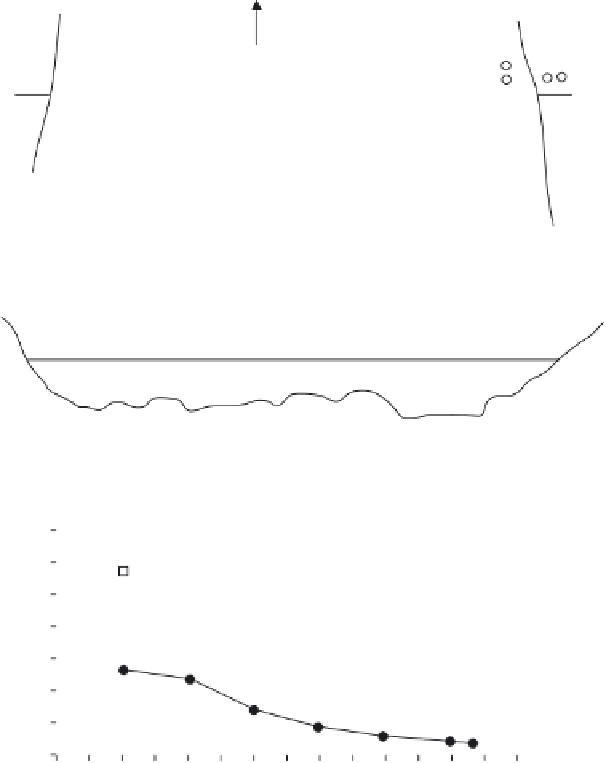Geoscience Reference
In-Depth Information
flow
direction
A
′
A
10
m
0
Tree
m
0
10
A
′
A
5
m
0
0
m
10
0.070
0.065
0.060
0.055
Limerinos
Petryk & Bosmajian
0.050
0.045
0.040
0.035
0.5
1.0
1.5
2.0
2.5
3.0
3.5
0
Stage, m
Figure 13.14
(a and b) Plan and cross-section of a reach of ephemeral Fowlers Creek, New South Wales, showing the distribution
of River Red Gum trunks in the channel. (c) Manning's roughness coefficient,
n
, as a function of water stage taking into account
the bed material size characteristics only (following Limerinos) and, in addition, the effect of vegetation (following Petryk and
Bosmajian) (after Graeme and Dunkerley, 1993).
and fill has been shown subsequently to operate in other
predominantly sandy (Foley, 1978) (Figure 13.18) and
gravelly (Schick, Lekach and Hassan, 1987) streams.
Leopold
et al
. were able to provide a loosely deter-
ministic relation between a hydraulic parameter - unit
discharge - and the depth of scour (Figure 13.17). This
has been corroborated from observations made in a small
sand-bed tributary of Walnut Gulch, southern Arizona,
though, here, the relation establishes itself only at flows
that have unit stream power
tions by Reid and Frostick (1987) indicate the short-lived
nature of supercritical flow during a flash flood. This sug-
gests that, if scour were indeed due to antidune migration,
it occurs in a short time interval of perhaps no more than
several tens of minutes, and only near peak flow. In fact,
in some way corroborating the restricted nature of this
interval, the values of the Manning roughness coefficient
that have been derived for the major part of flash-flood
duration are consistent with plane bed conditions rather
than with more complex bedforms (Nordin, 1963; Reid
and Frostick, 1987). It seems likely, therefore, that if an-
tidunes were to be implicated in the process, scour is
achieved much quicker than subsequent fill. However, ob-
10-15 W/m
2
(Powell
et al
.,
2007) (Figure 13.19(b)). Foley (1978) has gone further in
his explanation by suggesting that the depth of scour is
determined by the amplitude of migrating antidunes that
>











